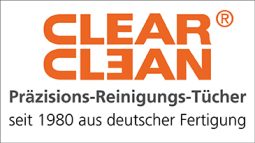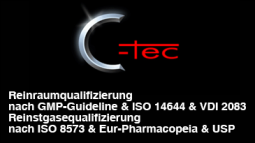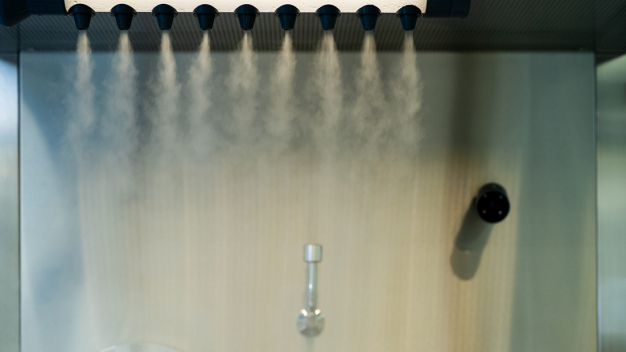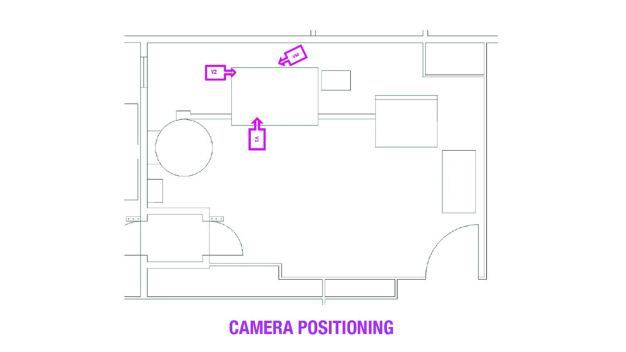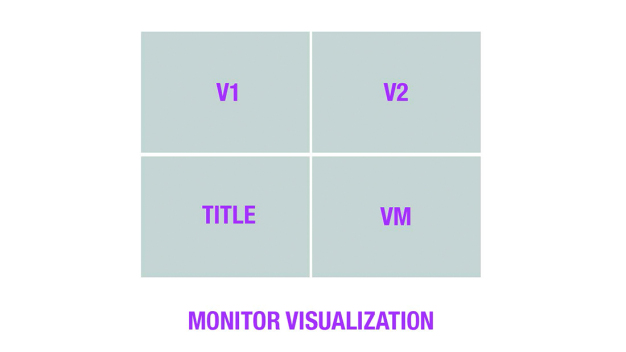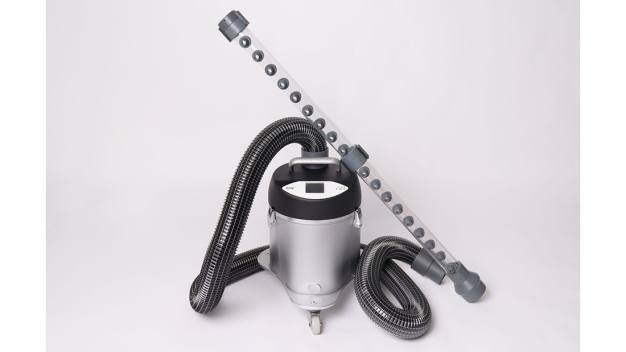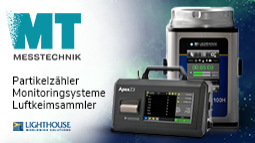- Systems
The main mistakes in performing a smoke study
The international journal Cleanroom Technology requested our paper on a crucial topic in cleanroom contamination control, namely smoke study. What is of most interest is the identification of the most common errors that are made during a testing process.
Cristina Masciola (Marketing Business Partner) compiled an article comparing Andrea Nava (Validation Engineer) and Roberto Stroppa (Validation Manager), whose decades of experience, expertise and constant updating provided a timely overview of what are the major risks of error in the execution of a smoke study.
Thesmoke study is a fundamental element of the qualitative and quantitative analysis of an airflow. The purpose of airflow visualization studies is to demonstrate, on the one hand, visual evidence of unidirectional airflows within an aseptic facility and, on the other hand, the ability of the system as a whole to protect the product and critical areas through a constant flow of primary air from the absolute filters. The need to control the maintenance of unidirectional flows is clearly stated in the Annex 1 document.
4.14
Cleanrooms should be supplied with a filtered air supply that maintains a positive pressure and/or an airflow relative to the background environment of a lower grade under all operational conditions and should flush the area effectively. Adjacent rooms of different grades should have an air pressure difference of a minimum of 10 Pascals (guidance value). Particular attention should be paid to the protection of the critical zone. The recommendations regarding air supplies and pressures may need to be modified where it is necessary to contain certain materials (e.g. pathogenic, highly toxic or radioactive products or live viral or bacterial materials). The modification may include positively or negatively pressurized airlocks that prevent the hazardous material from contaminating surrounding areas.
4.15
Airflow patterns within cleanrooms and zones should be visualized to demonstrate that there is no ingress from lower grade to higher grade areas and that air does not travel from less clean areas (such as the floor) or over operators or equipment that may transfer contamination to the higher grade areas. Where unidirectional airflow is required, visualisation studies should be performed to determine compliance, (see paragraphs 4.4 & 4.19). When filled, closed products are transferred to an adjacent cleanroom of a lower grade via a small egress point, airflow visualization studies should demonstrate that air does not ingress from the lower grade cleanrooms to the grade B area. Where air movement is shown to be a contamination risk to the clean area or critical zone, corrective actions, such as design improvement, should be implemented. Airflow pattern studies should be performed both at rest and in operation (e.g. simulating operator interventions). Video recordings of the airflow patterns should be retained. The outcome of the air visualisation studies should be documented and considered when establishing the facility's environmental monitoring program.
Remarks and warning letters
On the regulatory side, regulators have repeatedly intervened through observations and warning letters, complaining about the absence of adequate tests documenting adequate airflow in both At Rest and In Operation conditions. Specifically cited within the comments and warning letters are: CFR 21 part 113 (b): Appropriate written procedures, designed to prevent microbiological contamination of drug products purporting to be sterile, shall be established and followed. Such procedures shall include validation of all aseptic and sterilization processes...where the operator interrupts the unidirectionality of the flow by creating turbulent motion, or where, in testing, the angle of the chamber does not permit proper visualization of the flow, or the reagent source is positioned inefficiently. Other observations report that:
– Smoke studies in ISO 5 fume hoods were not conducted under In Operation conditions
– No study was carried out to evaluate the airflow pattern during aseptic operations
– No airflow pattern evaluation was conducted to determine that personnel activities and manual transfer of materials between ISO 8 and ISO 7 adversely affect air movement and air cascade
– Smoking studies have not been adequately documented
– The airflow model video does not present data to adequately assess the potential impact of the product on turbulence by observing vortices in the middle of ISO 5 hoods during In Operation
Therefore, it would in fact be reductive to consider the study of airflows in classified environments a mere control test. The smoke study is in fact a moment of investigation of the critical issues present in a process, which determines not only a series of possible corrective actions of the studied process but also the verification of the consequently made implementation activities. The smoke study initiates a kind of domino effect, in which an airflow control becomes the driving force behind subsequent and consequential controls and verifications. The behavior of cleanroom operators, their exact adherence to SOPs, their training and the quality of processes become verifiable precisely through the smoke visualization test. In fact, inspection bodies often challenge tests that have not covered steps not directly related to air flows, such as the transfer of materials from neighboring areas.
Parameters to consider when performing the smoke study
The smoke study contemplates a number of parameters critical to its proper execution and to avert any nonconformities that could alter both its success and the process under consideration.
– Study of the layout/area under consideration
– Study of ventilation system flow management
– Reagent used
– Volatility
– Persistence
– Visibility
– Equipment used
– Operator interventions
– Humidity and temperature
– Smoke angles
– Video Shooting
– The human factor
Each of these parameters, if not properly contemplated, can generate errors. The first two, layout and flow management, can be considered structurally essential to the safety and effectiveness of production processes.
The layout
One of the major critical issues may be determined by an inappropriate layout of the area where the production process takes place. Such areas should ensure unidirectional flow and good system capability in protecting the product and critical areas. Often, the study of flows highlights precisely the criticality of layouts. The resulting corrective actions are crucial to avoid disruption of unidirectional flows and a possible production stoppage.
Ventilation system flow management
Smoke study often highlights poor flow management, but not only that, it is a valuable aid in verifying pressure cascades to neighboring and local areas of lower criticality.
Reagent
The choice of reagent is one of the determinants of the success of a smoke study and should be considered in several aspects. First, volatility. The right degree of volatility allows the reagent to be transported without altering the direction of air flows. A low volatility value can result in a downward direction from the generator mouth preventing good visualization of stagnant airflows in specific areas of the process. Similarly, the degree of persistence: low persistence may not be sufficient for the completion of visualization. The balance between volatility and persistence is essentially related to the size of the area under analysis. And to these two parameters we have to add the time required for recording flows. How long should it take and what distance should the smoke travel to cover the entire flow without altering it and to allow for proper registration? This is the question we must ask ourselves in designing a successful smoke study. The right balance avoids misinterpretation even by inspection agencies. Last but not least, the tracer used must be nontoxic and free of corrosive capabilities harmful to personnel and the equipment and systems involved in the smoke study.
The smoke generator
Currently, smoke generation equipment uses more:
– CO2
– Glycol solution
– Liquid Nitrogen
– Deionized water
The toxicity of CO2 and especially liquid nitrogen, as well as the complexity of their management, make their use inadvisable. The glycol solution implies the need for thorough cleaning subsequent to the fume study. Therefore, the use of deionized water is advisable, not only because of its compatibility with the materials and the absolute safety of the operator, but also because, through a study of the aforementioned parameters, it ensures the success and effectiveness of the smoke study. A good generator ensures that smoke particles are not affected by gravity by falling to the ground in the absence of air flow. Of course, this characteristic must also be associated with other qualities. The smoke generator should also have a degree of automation that promotes the reduction of operator intervention within the area under analysis. In fact, remote control of the test avoids the risk of operator alteration of flows. Accessories are also critical. Tubes of varying lengths as well as lances help to carry out the smoke study in the best possible way.
Relative humidity and temperature
Other parameters to consider are the relative humidity and temperature of the air in the tested area: if the humidity is too low or the temperature too high, the display is impaired.
Smoke angles
It is essential to direct the smoke perpendicularly or obliquely to the airflow so that the air configuration can be accurately visualized. Smoke studies performed with the smoke emitted in the same direction as the airflow are a poor technique.
Shooting
The most important outcome of a smoke study is accurate video evidence that indicates the adequacy of flows to inspection agencies. Recording from multiple angles and with the right level of lighting can give the desired result.
Depending on the size of the area, at least three cameras should be used to capture the airflow patterns being studied from opposite sides of the airflow pattern and from the front. The view of each opposing camera must be wide enough to capture all the airflow and smoke involved in the study. The angles should capture the entire length of the smoke pattern, any operator manipulations (if it is an "in operation" study), and the equipment being used. A recording with incorrect angles may not include the entire smoke curtain, operator manipulations, or air flowing over the equipment. Missing one element of the study process can invalidate the entire effort. In situations such as in a biological safety cabin with an interior of one ISO classification and an exterior of a different classification or passages/thresholds/doors between rooms where the focus is airflow directionality and potential leakage, it is always advisable to have at least three cameras to capture different angles. However, a single camera may be best when the subject is a HEPA-filtered air supply within an ISO-rated room. Adequate lighting is critical for accurate video reproduction of the smoke study. Finding the balance is critical: not too bright to cause glare or too dim to lose essential details. In both cases of recording angles and lighting, it is often helpful to do some testing to fine-tune camera angles and lighting to verify that you are capturing the originally intended smoke and airflows before performing the actual smoke study.
The human factor
Last but not least is the human factor. There is often a gap between operational procedures and their implementation, and it is this gap that represents one of the most important risks within a process. The smoke Study is an essential time to check the gap between what should be done and what is actually done within the process. Its outcomes are extremely useful in acting on corrective actions and subsequent implementation activities.
MyFog® by AM: an effective tool, a team of professionals with decades of experience
The AM validation team performs the smoke test service through the MyFog system, the result of the research and development of the company that has been at the forefront of contamination control since 1990. As AM's Validation Manager Roberto Stroppa says, a smoke study cannot and should not be a simple airflow check, but a careful analysis of all the elements that contribute to contamination control. It is no coincidence that in recent years regulators have used fume studies as verification tests that address not only airflows, but also and especially operational dynamics. This means that the situation in operation takes precedence over the situation at rest.
MyFog® is a unique and innovative tool:
– works with process water
– one operator
– remote control
– dense quality smoke
The benefits of MyFog®
A single operator, with the standard remote control option, can manage the unit's start/stop, intensity and speed of smoke regulation. MyFog® has an intuitive interface with a 2.8" touch screen, which allows the operator to have immediate diagnostics and display of key operating parameters.
All-Inclusvie accessories
MyFog® is complete with smart accessories:
– additional fittings for pipe extension
– multi-hole lance for fog curtains
– telescopic rod
– trolley
– suitcase with wheels for transportation
– "follow me" tube
– support
Applications for every need
– Display of airflow velocity and direction in all classified rooms
– Balancing of pressures between rooms through visual indication
– Aid in the identification of air stagnation zones
Advanced technology
– Remote control with radio remote control (fan speed, fog density and pause mode)
– 2.8" TfT touch screen display
– Water level display and diagnostics with chromatic status indication
– Temperature monitoring and diagnostics with graphical display
– Automatic life-cycle optimization of transducers with selective switch-on according to operating hours
– fog density adjustment
– Fan rotation speed adjustment (fog spreading speed)
– Quick Start/Stop function
– Monitoring hours of power on, emission, and use of each piezoelectric transducer
– piezoelectric transducer malfunction diagnostics
– explicit alarm diagnostic indication
– Password-protected diagnostic menu in operator mode (read only)
– Diagnostic menu in supervisor mode (changes allowed) password protected
– Pause function with storage of current generation settings
– Cycle reset to stored settings on exit from pause or power interruption
– Variable beeper according to function
– transducer life cycle alarm
![]()
AM INSTRUMENTS
Via Isonzo, 1/C
20812 Limbiate (MB)
Italy
Phone: +39 02 8728421
email: info@aminstruments.com
Internet: https://global.aminstruments.com/

